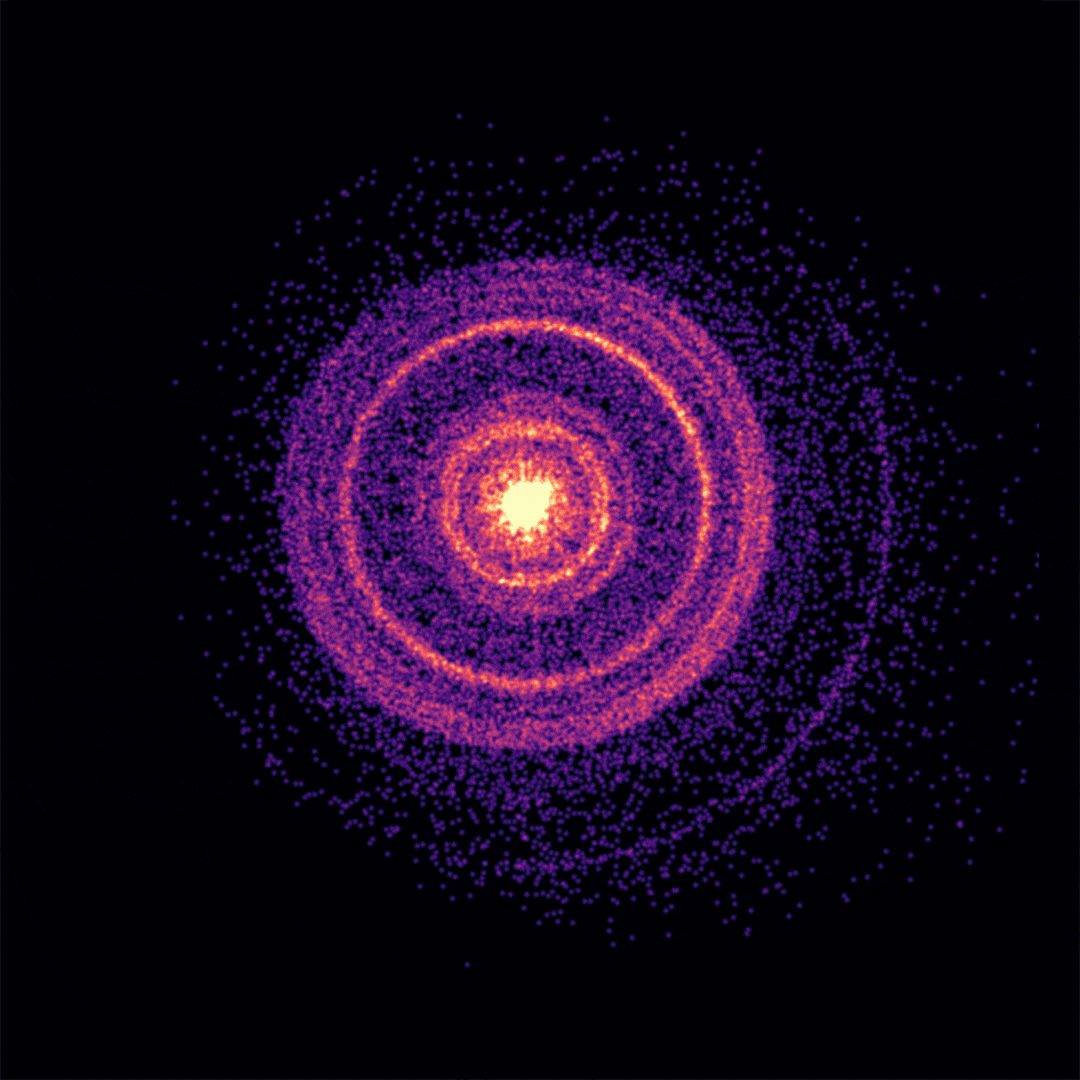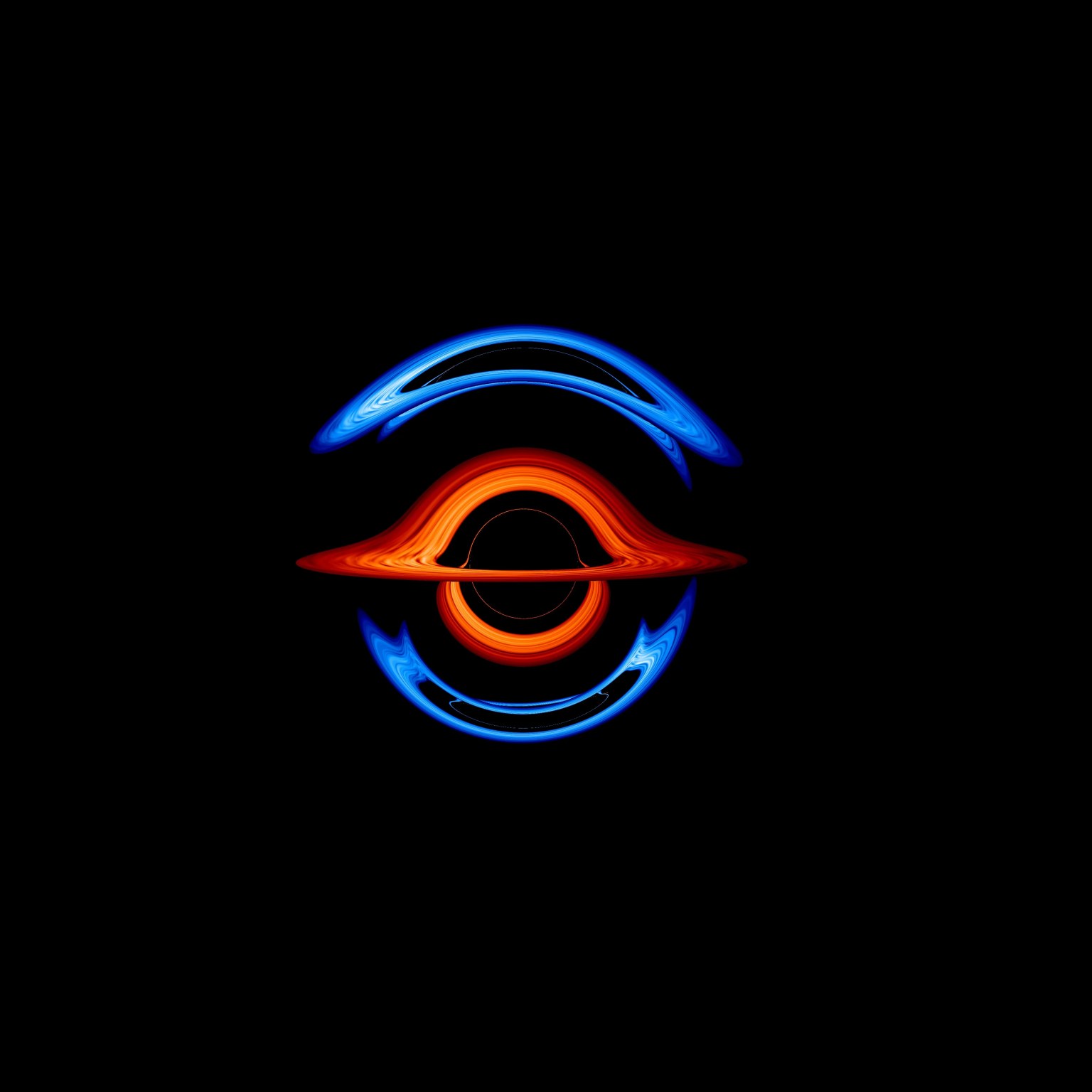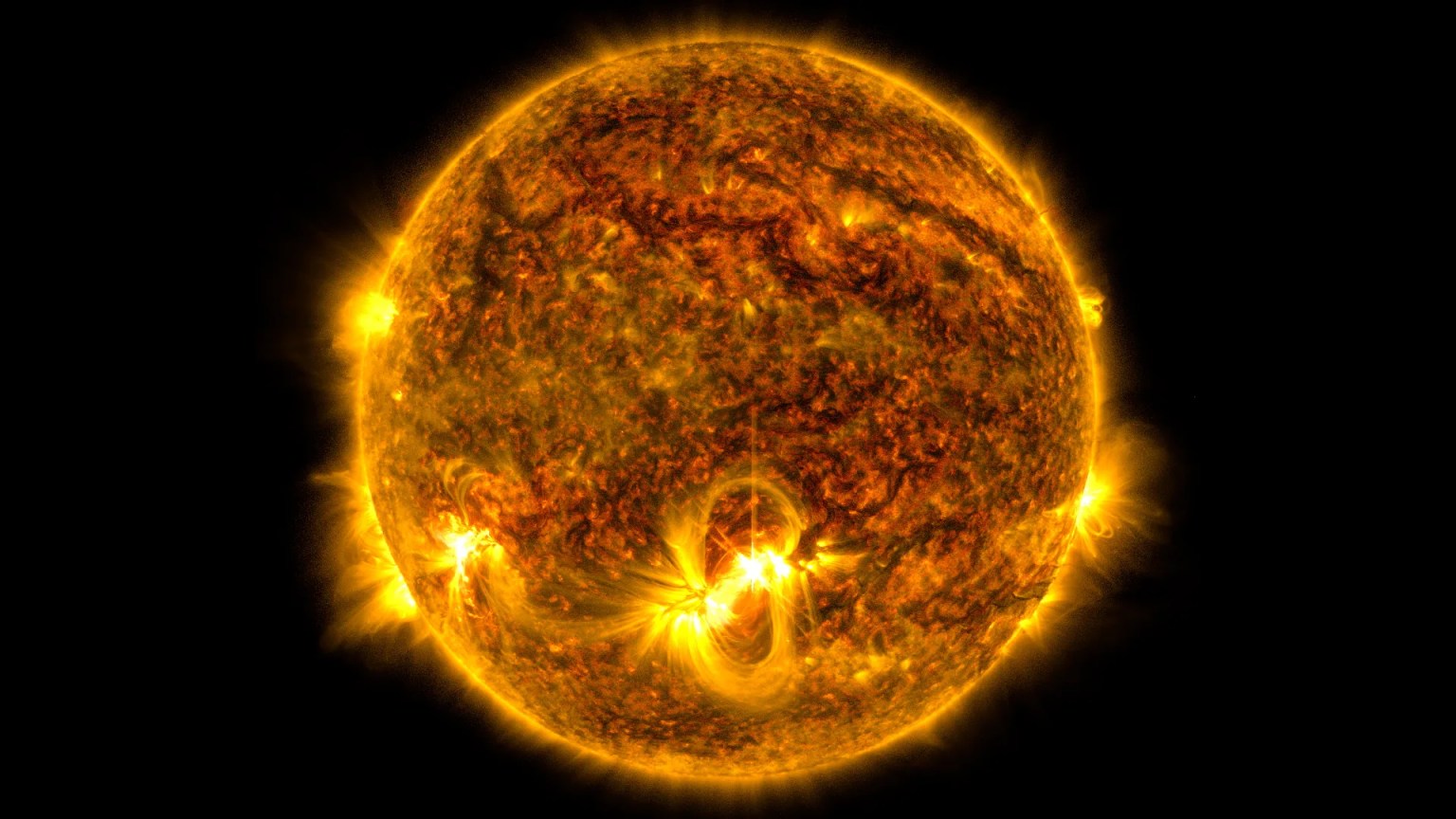The Swift Spacecraft
Swift launched into orbit on Nov. 20, 2004, as NASA’s Swift Gamma-ray Observatory. In 2018, NASA renamed the spacecraft in honor of Neil Gehrels, who helped develop Swift and served as its first principal investigator.
At the time of its launch, Swift was a first-of-its-kind multiwavelength observatory dedicated to the study of GRBs (gamma-ray bursts). GRBs are the most powerful explosions in the universe, triggered by the catastrophic deaths of massive stars — and the formation of new black holes within them — or the mergers of systems containing orbiting neutron stars or black holes. Swift’s three instruments work together to observe GRBs and their afterglows in gamma-ray, X-ray, ultraviolet, and visible light.
Swift’s BAT (Burst Alert Telescope) detects and localizes gamma-ray bursts to within a tenth of a degree (3 arcminutes or less) and then relays this position to the ground within 20 seconds. After the initial burst detection, the spacecraft autonomously — and “swiftly” (between 20 to 100 seconds) — repoints to bring the burst location into the field of view of the sensitive narrow-field XRT (X-Ray Telescope) and UVOT (Ultraviolet/Optical Telescope) to observe the explosion’s afterglow.
Swift’s speed, flexibility, and broad wavelength coverage quickly led to its wider use as a general astronomical observatory, studying phenomena as diverse as exploding stars and their remnants, stellar flares, passing stars torn apart by supermassive black holes, eruptions in active galaxies, and comets and asteroids in our solar system. It also conducted an all-sky high-energy X-ray survey as well as ultraviolet surveys of nearby galaxies. By its 20th anniversary in orbit, Swift had observed 1,800 GRBs, 1,400 supernovae, and data it captured had been used in more than 6,600 scientific publications.
Burst Alert Telescope
The BAT’s large field of view enables it to see up to 50% of the sky at once. The BAT is a coded aperture instrument, which uses a D-shaped mask of about 52,000 tiny, randomly placed lead tiles placed a meter above the detectors. Light from a GRB or other high-energy source casts a shadow of the mask onto the detector, and this shadow is shifted in a unique way that depends on the source’s sky location. About 11% of the sky is at least partially coded in the BAT’s field of view.
Once it detects a burst, the BAT’s computer reconstructs the observed part of the sky and calculates a rough localization (to within 3 arcminutes, or better than 0.1 degrees) for it. This position is immediately transmitted to the ground and distributed to astronomers worldwide through NASA’s General Coordinates Network. Speed is essential because GRBs fade quickly, and this information allows other telescopes to begin the search right away.
The BAT also performs an all-sky high-energy X-ray survey, capturing images every few minutes when not on burst duty. The BAT compares sources found in these images against an on-board catalog of X-ray sources, and those either not listed in the catalog or showing large variability are deemed transients. Their locations are distributed to the astronomical community just like those of the bursts.
X-ray Telescope
Swift’s XRT measures the light curves — brightness changes through time — of GRBs and afterglows over a wide energy range, from 0.2 to 10 kiloelectronvolts (keV, or up to thousands of times the energy of visible light). It also collects spectra, the distribution of X-ray energies, analogous to colors in visible light. For a typical GRB, the XRT can pinpoint its location to about 3-arcsecond accuracy (or less than a thousandth of a degree) within 10 seconds. It can study its X-ray counterpart within 70 seconds of burst discovery and continue observations for days to weeks. Prior to Swift, long, detailed X-ray observations of GRB afterglows had been difficult to obtain because the few X-ray telescopes in space could not target the burst until hours or days later.

Ultraviolet/Optical Telescope
The UVOT captures the ultraviolet and visible-light properties of sources, is aligned with the XRT, and provides the most accurate position (1 arcsecond or better) for GRBs. The UVOT is a 30-centimeter (12-inch) aperture reflecting telescope with a 17-arcminute field of view (roughly 60 percent of the apparent size of a full moon). It’s sensitive to wavelengths from red visible light to the far ultraviolet (650 to 170 nanometers). This makes the UVOT uniquely suited for afterglow studies. Its ultraviolet capability is not possible from the ground and, at the time of launch, it was much more sensitive than any other quick-reaction telescope in orbit.

When Swift observes a new GRB, the UVOT executes a predetermined program of exposure times and filter combinations. The initial images are immediately sent to the ground, both for use as a finding chart by observers and as a comparison to archival observations of the same patch of sky, which allows for detection of a new source that could be a GRB’s optical counterpart. Filtered observations provide the source’s behavior over time as a function of wavelength.
Once Swift slews to a new burst, the UVOT acquires a 150-second exposure of the target field. A 2-by-2 arcminute portion surrounding the GRB position, determined by the XRT, is radioed to the ground in less than a minute. The Swift Operations Center automatically posts this image to the General Coordinates Network. During subsequent ground contacts, the full frame of the finder image is sent. Images generally contain at least 15 stars listed in existing catalogs, allowing for localizations of less than one arcsecond.
































